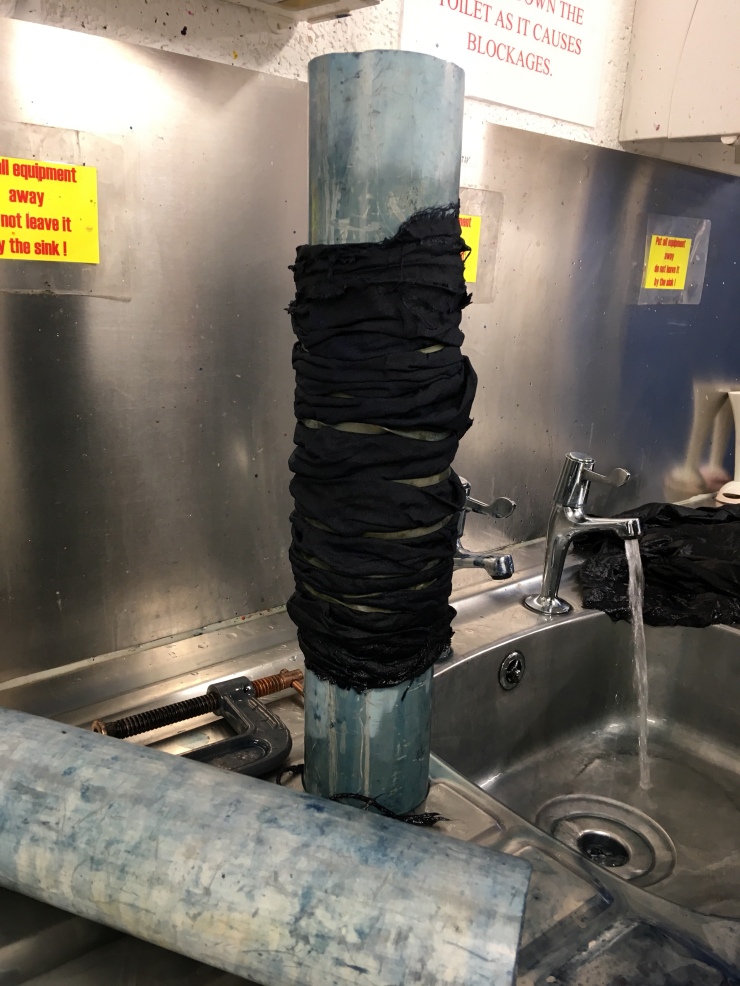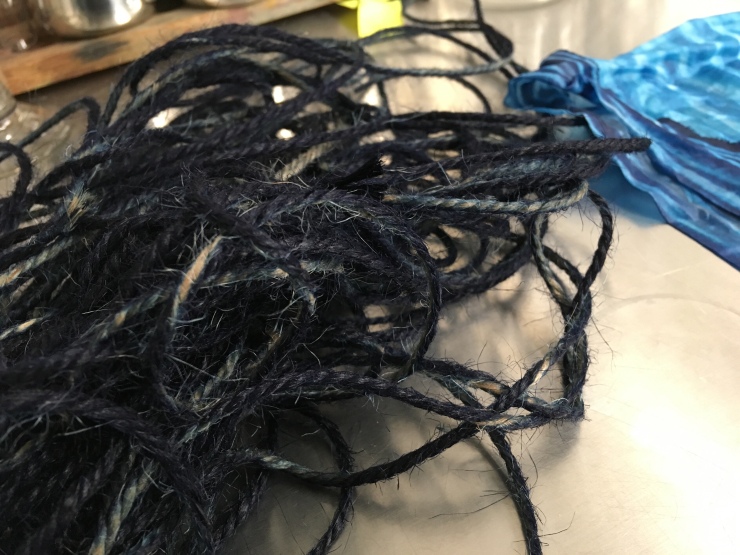25 March 2018
Presently I am experimenting with techniques to add textures and pattern, that connect with the landscape, into my work. Following this I hope to marry textures and pattern with my drawings.
Arishi Shabori
Arishi Shabori is a Japanese pole wrapping technique. Arishi is a Japanese term for Storm.
I used silk for this experiment.





I was left with a pile of indigo dyed jute which I kept and used later to have a go at some DIY weaving using cardboard as a loom.


Experimenting with some scraps of fabric.
I dyed the scraps in the indigo vat. Originally I just wanted to see what colours different types of fabric but then I decided to have a go at Japanese Boro (from Boroboro, meaning tattered or repaired ). Boro came from a necessity, when cotton was too expensive for peasants, to repair and patch up garments. Boro garments were handed down through generations constantly being repaired and often the original garment being unrecognisable.

In order to create some drawn imagery and texture I tried my hand at machine embroidery. Although a bit of practice is needed on this I was quite pleased with the results and even learnt how to do a time lapse film. I can’t show the film on here but you can view it at (https://www.facebook.com/nicki.dennett). The image was inspired by my walks up Kinder Scout.



Bibliography
Furugistarjapan. (2018). Boro: Japanese Folk Fabric, (online) Available at: https://furugistarjapan.wordpress.com/2011/02/18/boro-Japanese-folk-fabric/ (Accessed 25 Mar. 2018)
Victoria and Albert Museum. (2018). V&A. Make your own Japanese ‘boro’ bag. (Online) Available at: https:// http://www.vam.ac.uk/articles/make-your-own-japanese-boro-bag (accessed 25 Mar. 2018).